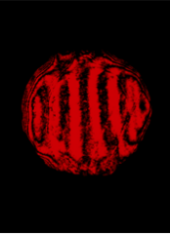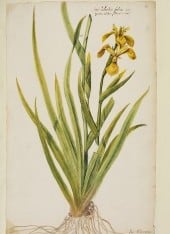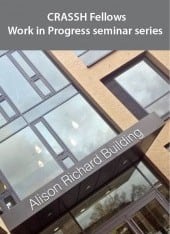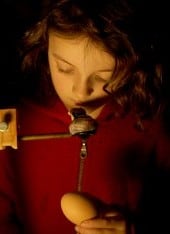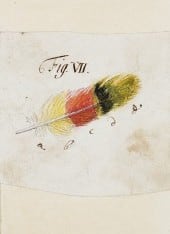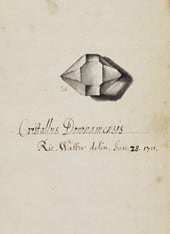Conference organised by the 'Making Visible' project at CRASSH. This event is free but booking is recommended.
The aim of this workshop is to explore the connections and networks within the wider visual worlds of the members of the early Royal Society (c. 1660-c.1710). Royal Society Fellows such as John Evelyn, Samuel Pepys, Thomas Povey, and William Aglionby were enthusiastic collectors of art, including prints, and were familiar with Continental collections and art theoretical works. They interacted frequently with printers, instrument makers and craftsmen, attended auctions, and made a point of donating portraits to the Society. How did
first-hand experience and appreciation of art, artistic skills and collections affect the way members of the Society approached and judged images and objects of knowledge? How did their engagement with the visual worlds around them compare with their Continental counter-parts? We hope to bring together historians of science, art, collections, and print culture in order to bridge the artificial and unhelpful differentiation of ‘artist’ and ‘scientific’ images in this period.
Speakers: Alexander Marr, Matthew Walker, Rebekah Higgitt, Henrietta McBurney Ryan, Sietske Fransen, Kate Bennett, Karin Leonhard & Elisa von Minnigerode, Spike Bucklow, Andrew Burnett, Frances Hughes, Katherine M. Reinhart, Katy Barrett
A small number of travel bursaries for graduate students and early career fellows from the UK and overseas are available. Please contact Judith Weik to apply, stating your affiliation and providing a brief statement as to why you would like to attend the conference.
Monday 16 July 2018 |
|
| 09:00-09:30 | Registration and coffee |
| 09:30-09:40 | Sachiko Kusukawa (University of Cambridge): Welcome & Introduction |
| 09:40-11:10 | Chair: Moti Feingold (Caltech) Alexander Marr (University of Cambridge): William Sanderson’s Criticism and Copying Matthew Walker (University of New Mexico): Oblivious to the Ancient and Moderns? The Royal Society and John Evelyn’s Translation of Fréart’s Parallel |
| 11:10-11:30 | Coffee |
| 11:30-13:00 | Chair: Richard Johns (University of York) Rebekah Higgitt (University of Kent): The Making of a Medal: The Iconography and Manufacture of the Royal Society’s Copley Medal, c. 1736-1742 Henrietta McBurney Ryan (University of Cambridge): Mark Catesby and the Royal Society |
| 13:00-14:00 | Lunch |
| 14:00-15:30 | Chair: Kim Sloan (British Museum) Sietske Fransen (University of Cambridge): Netherlandish Influences on the Visual World of the Royal Society Kate Bennett (Magdalen College, University of Oxford): John Aubrey's Prospects |
| 15:30-16:00 | Tea |
| 16:00-17:30 | Chair: Diana Dethloff (University College, London) Karin Leonhard and Elisa von Minnigerode (Universität Konstanz): John Finch. A Lynx with a Knife Spike Bucklow (Hamilton Kerr Institute, University of Cambridge): The Paston Treasure |
Tuesday 17 July 2018 |
|
| 09:00-10:30 | Chair: Keith Moore (Royal Society) Andrew Burnett (British Museum): ‘They found a great quantity of Roman money’. Institutions and Coin Collecting in the 17th Century Frances Hughes (University of Cambridge): Visual Discernment in the Calligraphy Collection of Samuel Pepys |
| 10:30-11:00 | Coffee |
| 11:00-12:30 | Chair: Michael Hunter (Birkbeck, University of London) Katherine M. Reinhart (University of Cambridge): Institutional Image-Makers: Richard Waller and Claude Perrault Katy Barrett (Curator of Art Collections, Science Museum): George Gabb, ‘The Physical Laboratory of the Académie des Sciences’ and Unpicking the Visual Worlds of the Royal Society |
| 12:30 - 12:45 | Felicity Henderson (University of Exeter): Closing Remarks |
| 12:45 | Lunch |
William Sanderson’s Criticism and Copying
Alexander Marr (University of Cambridge)
William Sanderson’s Graphice, the use of the pen and pensil, or, the most excellent art of painting (1658) is one of the earliest treatises on the pictorial arts published in English. Used by several members of the Royal Society as they learnt to draw, Sanderson’s book leaned heavily on the works of earlier authors, including Francis Bacon, Edward Norgate and Henry Wotton. This paper will consider Sanderson’s art criticism in light of his own copying practices, both textual and visual. The latter have recently come to light in a hitherto unstudied copybook, which also provides tantalising glimpses of Sanderson’s natural historical and technological interests.
Oblivious to the Ancient and Moderns? The Royal Society and John Evelyn’s Translation of Fréart’s Parallel
Matthew Walker (University of New Mexico)
John Evelyn’s 1664 translation of Roland Fréart de Chambray’s Parallèle de l'architecture antique et de la moderne, with his accompanying ‘Account of Architects and Architecture’ represents the most substantial piece of architectural writing to emerge from the milieu of the early Royal Society. In the preface Evelyn explicitly aligns the work with other Royal Society publications and research endeavors, and the early parts of the ‘Account’ where Evelyn classifies, by genus and species, the various personas involved in the production of buildings appear to be, methodologically at least, very close to the Society’s broader agenda. Yet the rest of the publication, in its choice of source material and in the theoretical position that Evelyn adopts throughout the text is, on the face of it, a deeply conservative one. Both Fréart’s original text and Evelyn’s ‘Account’ are resolutely Vitruvian in their outlook, and both author and translator uphold the authority of the ancient writer and the architects of his world over any modern voice. In this respect, the publication would seem out of place in the early Royal Society (at least by the terms of the traditional reading of the group: as a dynamic force for empirical change). When compared to French architectural discourse in the 1660s and 70s, the ground occupied by the English edition of the Parallel borders on the reactionary. In this paper, I will explore why Evelyn and the Royal Society might have been involved in the production of such an apparently doctrinal text and, in doing so, attempt to locate architecture’s complicated theoretical place within the Society’s broader agenda. Throughout, I will use Christopher Wren and Roger North’s writings to provide a more ‘radical’ English counterpoint to Evelyn’s ideas. And I will conclude with some thoughts on the substantial legacy that Evelyn (and Fréart’s) publication had in England, for it is my contention that the deeply Vitruvian arguments put forward in this best-selling architectural text largely shaped the trajectory of English architecture throughout the first half of the eighteenth century.
Visual Discernment in the Calligraphy Collection of Samuel Pepys
Frances Hughes (University of Cambridge)
Samuel Pepys’ calligraphy collection comprises numerous textual fragments pasted and bound into three volumes, which together document a history of handwriting and textual forms. The volumes should be understood in relation to a concentrated circle of collectors who were also gathering fragments of text and lettering from around the mid-1690s and into the early years of the eighteenth century, including John Bagford, Humfrey Wanley and Hans Sloane. This paper will explore the ways in which the calligraphy volumes evidence a deep and multifaceted interest in visual criticism trained on the written word within Pepys’ social and intellectual milieu. By untangling knotwork flourishes, enjoying the mimetic competition between printed and hand-drawn graphics, or examining textual micrographic samples, calligraphic lines and notational marks offered educated gentlemen a body of material on which they could practise and hone communal, comparative and repeatable modes of critical observation.
John Finch. A Lynx with a Knife
Karin Leonhard and Elisa von Minnigerode (Universität Konstanz)
John Finch is an illustrious figure not only in the history of science, medicine, and philosophy, but also in the history of art. As the brother of the natural philosopher Anne Conway and a personal acquaintance to William Harvey, Finch was a trained physician, educated in Padua and employed by the Medici family as a professor of anatomy in Pisa. In Florence he became an English resident and later took the post of an ambassador in Constantinople. Together with his lifelong companion Thomas Baines, he was named fellow of the Royal Society in 1663. Throughout his career Finch conducted anatomical demonstrations, dissections and experiments following his interests in natural philosophy and visual perception theory (e.g. the microstructure of coloured objects). Both his students and his fellow anatomists praised his analytical and motional skills, his diligence and detailed observations. Finch‘s notebooks give an account of these studies and show his penchant for art. He acted as an agent, making acquisitions for Lord Arlington, and built up a fine collection of Italian art for himself. His deep appreciation of the Florentine artist Carlo Dolci shows that he conveyed his refined observations from his anatomical and scientific research into his taste for paintings. He had his own and Baines’s portrait painted by Dolci, gave three pictures as presents to Charles II, and brought four more pictures by Dolci with him on his return to England in 1681. This presentation will give an account of Finch‘s keen interest in material microstructures and delicate taste in artistic objects.
The Paston Treasure
Spike Bucklow (Hamilton Kerr Institute, Cambridge)
The talk will centre upon a large still life of around 1664 that depicts items from a cabinet of curiosities. The painter is unknown, but probably Dutch, and the painting was almost certainly executed over a three month period in Oxnead, Norfolk, under the close supervision of Sir Robert Paston. At the time of painting, Sir Robert was a Fellow of the Royal Society, was in correspondence with Thomas Henshaw, another FRS, and was close friends with Dr Thomas Browne. The talk will consider the painting as a meeting between the worlds of art and science, theory and practice, Norwich and London.
Netherlandish Influences on the Visual World of the Royal Society
Sietske Fransen (University of Cambridge)
This paper will discuss the many ways in which the visual world of the fellows of the Royal Society was influenced by Netherlandish visual and graphic practices. Not only were some of the most important London-based painters of Dutch descent (such as Cornelius Johnson and Peter Lely), the Royal Society was also intensely corresponding with scholars from the Dutch Republic, such as Antony van Leeuwenhoek and Christiaan Huygens. On top of that, the Society even had a Dutch patron, with the ascension to the throne of King William III in 1689, after the Glorious Revolution the year before.
By investigating closely the immediate visual environment of the Fellows of the Royal Society, in terms of painted portraits, printed and drawn images, this paper will look into the self-evidence of Dutch influences on the visual world of the Royal Society. It will ask questions about nationality and craftsmanship, as well as knowledge and geographical borders.
John Aubrey's Prospects
Kate Bennett (Magdalen College, University of Oxford)
'If ever I had been good for anything,' Aubrey said, ' 'twould have been a Painter'; and he cites his quickly-sketched 'Landskips' as one of the few achievements of an interrupted career. Aubrey's manuscripts are full of sketches of ancient monuments, tombs, heraldry, and views. In 1642 he caused a sketch to be made of the ruins of Osney Abbey, for the sake of recording their appearance, at a time when the "ruin prospect" was typically an imaginary composition. This was later etched by Hollar and published by William Dugdale. Aubrey commissioned and purchased paintings and sketches from Samuel Cooper, William Faithorne, William Dobson, and Wenceslaus Hollar, whose life he wrote. He consulted many others, such as John Hoskyns and Robert Streater. Characterising himself as a 'lieve-habber', who rose from unpromising rural beginnings, he aspired to the role of collector and connoisseur. He acted as an agent for the Earl of Pembroke, and he had a strong interest in architecture and garden design. His biographical work Brief Lives is a kind of collector's notebook, full of details about the location of portraits, their subject and faithfulness to life. In my paper, I shall sketch out Aubrey's visual landscape, while considering the relation between remembering and forgetting on which the prospect drawing depends.
‘They found a great quantity of Roman money’. Institutions and Coin Collecting in the 17th Century
Andrew Burnett (British Museum)
After a shaky birth in the 16th century (Cambridge), coin collecting eventually got off to a proper start in Britain in the 17th century, with the formation of a grand royal collection at St James’s and a respectable one in the growing Bodleian Library; in addition, Camden’s work prompted the spread of the subject to schoolmasters and vicars. Libraries provided one model for coins, the other was the ‘cabinet of curiosities’, most notably that of the Tradescants. The young Royal Society at first followed this second model, in a rather pathetic manner, and as such provided an example for the new Ashmolean Museum in Oxford and Balfour Museum in Edinburgh. All were more or less complete failures, but the Royal Society collection limped on until the later 18th century, marked, however, by an unusual insistence on provenance. Only much later, in the 19th century, with the rise of the archaeological museum and men like Evans and Babington did things eventually change, and British collections emerged as some of the most important in Europe.
The Making of a Medal: The Iconography and Manufacture of the Royal Society’s Copley Medal, c. 1736-1742
Rebekah Higgitt (University of Kent)
This paper will discuss the origins, design and creation of the Royal Society’s first prize medal, the Copley Medal, in the first half of the 18th century. Both honorary awards for science and prize medals were novel concepts in the 1730s but because they, and the idea of rewarding individual achievement, have become ubiquitous their arrival has tended to be overlooked or simply accepted as an inevitable development. As well as exploring the meaning of medals to the Society – particularly key members of its leadership, including the proposer of the scheme, Martin Folkes – I will argue that paying attention to the medal’s iconography and material nature gives important clues about the way in which experimental philosophy was conceived within the Royal Society. I will, as far as possible, also explore the Society’s engagement with the artists and artisans who had helped raise interest in medals and to whom they had to turn to make the idea of a prize medal a reality. Rather than being viewed as an idealised reward system, for which the historical focus has been on the question of who received it and why, this paper points out that the medals had to be designed, engraved and struck. The medal concept required investment of time, money, thought and skill.
Mark Catesby and the Royal Society
Henrietta McBurney Ryan (University of Cambridge)
During the early years of the 18th century, the Royal Society provided a focus for intellectual exchange between scientists, artists and antiquarians. The naturalist-artist, Mark Catesby (1682-1749), described by a contemporary as ‘pretty well skilled in natural history who designs and paints to perfection’, was elected a member in 1733, following publication of volume I of his Natural History of Carolina, Florida and the Bahama Islands (1732-1747). Catesby took an active part in the Society’s activities, attending meetings, acting as official draughtsman, sitting on the Repository committee, presenting papers, reviewing publications, and backing other natural scientists for membership.
Evidence of Catesby’s activities are preserved in the Society’s library and archives. In addition to a copy of the Natural History coloured by himself, they include entries in the Journal, Record, Register and Account books, and an important corpus of his letters to the botanist William Sherard, written from South Carolina between 1722-5. The paper will highlight some of these documents as well as flag up several missing items to show the role the Royal Society played as the backdrop to Catesby’s work.
Institutional Image-Makers: Richard Waller and Claude Perrault
Katherine M. Reinhart (University of Cambridge)
Founded only six years apart, the Royal Society of London and the Académie Royale des Sciences in Paris were two of the most important and influential scientific societies founded in the seventeenth century. Despite their very different national contexts, both societies regularly created drawings and printed images as part of their scientific pursuits and publications. Richard Waller of the Royal Society and Claude Perrault of the Paris Academy both actively participated in the scientific life of their respective institutions while at the same time each played an important role as an image-maker. In addition to his scientific investigations, translation work, and tenure as secretary, Richard Waller created many images for the early Royal Society from study drawings to engraved frontispieces. In Paris, Claude Perrault drove the anatomical research programme that became the Histoire des animaux volume, but he was also frequently tasked with creating images during the Academy’s dissections and experiments. What role did these two men play in shaping the visual programmes of their respective scientific societies? And how did their backgrounds as image-makers shape the scientific work they performed and vice versa? This paper will analyse the visual and graphic practices of these two prominent scientific societies through the work of two of their chief image-makers: Richard Waller and Claude Perrault.
George Gabb, ‘The Physical Laboratory of the Académie des Sciences’ and Unpicking the Visual Worlds of the Royal Society
Katy Barrett (Curator of Art Collections, Science Museum)
In 1948, the Science Museum acquired a drawing by French artist Sébastian Le Clerc entitled ‘The Physical Laboratory of the Académie des Sciences’. It formed part of the collection of George Hugh Gabb, chemist and antiquary, and joined the museum with a group of instrument makers’ trade cards. Gabb had exhibited this drawing at a Royal Society soirée on 18 May 1938 and lent it for illustration in the Illustrated London News three days later, including a detailed key identifying 115 individual instruments. Proof engravings of the image also exist and have been interpreted by historians of science and collecting as showing the collections of the Académie after its move to the Louvre in 1699. However, art historians have seen other drawn versions of the composition as an idealised view of Le Clerc’s own ‘cabinet’, demonstrating his virtuosity across the arts and sciences. This paper will consider the legacy of such a drawing within the histories of science and art, and how a collector like Gabb has shaped our historiographies of institutions like the Royal Society.


